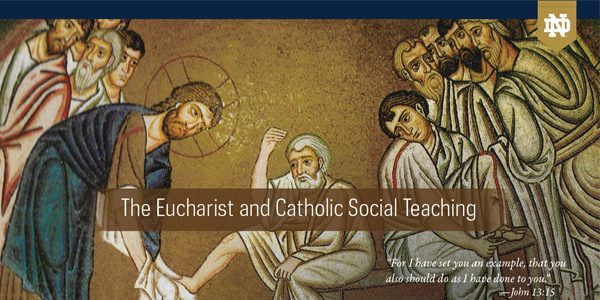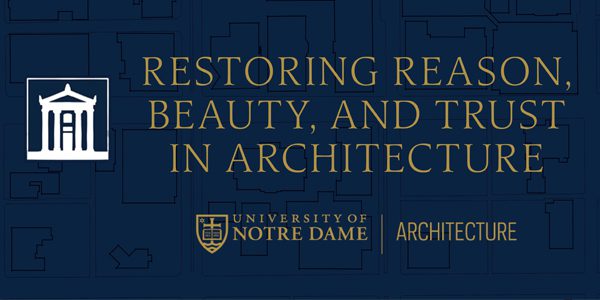Consider This! Simplifying the COVID-19 conversation – Epidemiology of COVID-19
Subscribe to the ThinkND podcast on Apple, Spotify, or Google.
Featured Speakers:
- Heidi Beidinger-Burnett, Director, Eck Institute for Global Health Masters Program; Associate Professor of the Practice, Department of Biological Sciences, University of Notre Dame; President of the St. Joseph County Board of Health
- Mary Ann McDowell, PhD, Associate Professor of Biological Sciences and Member of the Eck Institute for Global Health, University of Notre Dame
- Alex Perkins, Associate Professor, Department of Biological Sciences, University of Notre Dame
- Jenna Coalson, Assistant Professor of the Practice, Department of Biological Sciences, University of Notre Dame
For this session, hosts Heidi Beidinger-Burnett, Director, Eck Institute for Global Health Global Health Masters Program and Mary Ann McDowell, Associate Professor of Biological Sciences were joined by Alex Perkins, Associate Professor, Department of Biological Sciences and Jenna Coalson, Assistant Professor of the Practice, Department of Biological Sciences. The purpose of this session is to discuss the epidemiology of Covid-19, as it is important for the public to stay informed on the facts about the pandemic.
The session began with an introduction of the guests. Coalson explained the interdisciplinary nature of epidemiology and why she believes it is a great career for her. Perkins explained that he studied biology and math, as he realized early on that he did not truly want to be a doctor. He also explained that his research has led him to very cool experiences. This led to the “Rumor Has It’ portion. The first rumor was that the virus is evolving to become more deadly because there are fewer recorded deaths. Coalson said that there is some evidence that they are getting better at treating people in hospitals, which may be responsible for flattening the curve.
After a recap of the concerning Covid data that took place that week, Perkins discussed what a scientific model is and why it is necessary. Models allow for a mathematical tool which can analyze the mathematics and the biology necessary to understand a virus. Models can determine how transmittable a virus is, when lockdown is necessary, and more. He then said that the next few weeks look unfortunate; the trends are all pointing upward and it is important how people respond to those upward trends. Unfortunately, the human dynamic is very difficult to predict.
A viewer then asked about what the “Great Barrington Declaration” is, and Coalson was called to answer that question. She stated that it includes two major concepts, which are “focused protection” and “herd immunity.” The declaration states that the focus should be more on high risk populations to quarantine, while the healthier parts of the population should contract the disease. This way, cases would eventually drive to zero, because enough people will have personal immunity from the virus. Coalson stated that this theory may rely on too many assumptions. For example, it assumes that Covid-19 has very long lasting immunity after infection. Moreover, it assumes that those without underlying conditions will always be at lower risk for severe symptomatology. Finally, it is difficult to imagine that we would be able to fully protect the older and high-risk populations when the disease is running rampant in the rest of the country.
Next, Perkins began a discussion about Bayes’ Theorem and what it means to epidemiology. Bayes’ Theorem allows for scientists to relate different conditional probabilities. For example, “given that someone has Covid, what is the probability that, if we test them, the test will be positive?”. There are positive and negative conditional probabilities, which depend on the way the different variables are framed, as Perkins shared.
Finally, this was followed by an explanation of the importance of testing. Whether people are vulnerable or not, regular testing is very important to ensure transmission does not occur. Catching people early in their infections can be the key to beating the virus.
- 12:08—There is some evidence that they are getting better at treating people with Covid in hospitals, which may be responsible for flattening the curve.
- 15:51—The Covid numbers are increasing drastically, and at this point we are going to have to start rationing care.
- 28:51—Coalson concluded that it is not plausible for younger people to reach herd immunity in such a way that the “Great Barrington Declaration” suggests.
- 34:25— Bayes’ Theorem allows for scientists to relate different conditional probabilities.
- 43:52—There is no such thing as too much testing.
- “The pattern of the pandemic is really clear: infections go up, followed by spikes in hospitalizations, followed by spikes in deaths.” (Heidi Beidinger, 16:45)
- “With infectious diseases it is really important to consider change over time because a person’s risk at the beginning of an epidemic will not be as high towards the end.” (Jenna Coalson, 20:57)
- “We, as a society, still have a lot of power to keep this from being worse than it could be.” (Alex Perkins, 23:42)
- “We need lots of testing to have good data.” (Jenna Coalson 49:00)
- “People who are less well-off are forced into positions once they are exposed, and, maybe don’t have care to support them once they get it.” (Alex Perkins 55:30)
Related Content
Eucharistic Abundance and Social Regeneration
In 2022, the United States Conference of Catholic Bishops (USCCB) announced that the Church in this country would undertake a Eucharistic Revival, as a way to bolster Catholics’...
View EventHow Cities Speak To Us
Professor Emily Talen joins the School of Architecture to share her work at The Urbanism Lab and its focal point at the University of Chicago for the study of the built...
View EventThe Black National Anthem & Parent’s Signing Off On Children Reading Black Books
In this week’s episode, Isaiah and Tykiera talk about some tweets about Black people that took Twitter by storm. They also talk about The Black National Anthem, Lift Every Voice...
watch video


